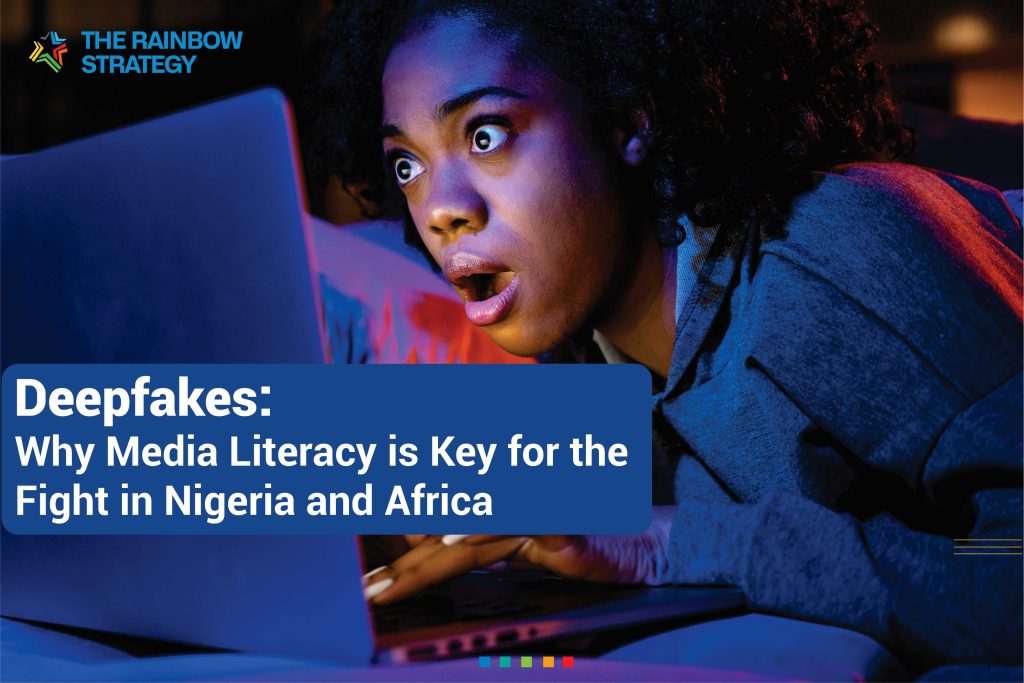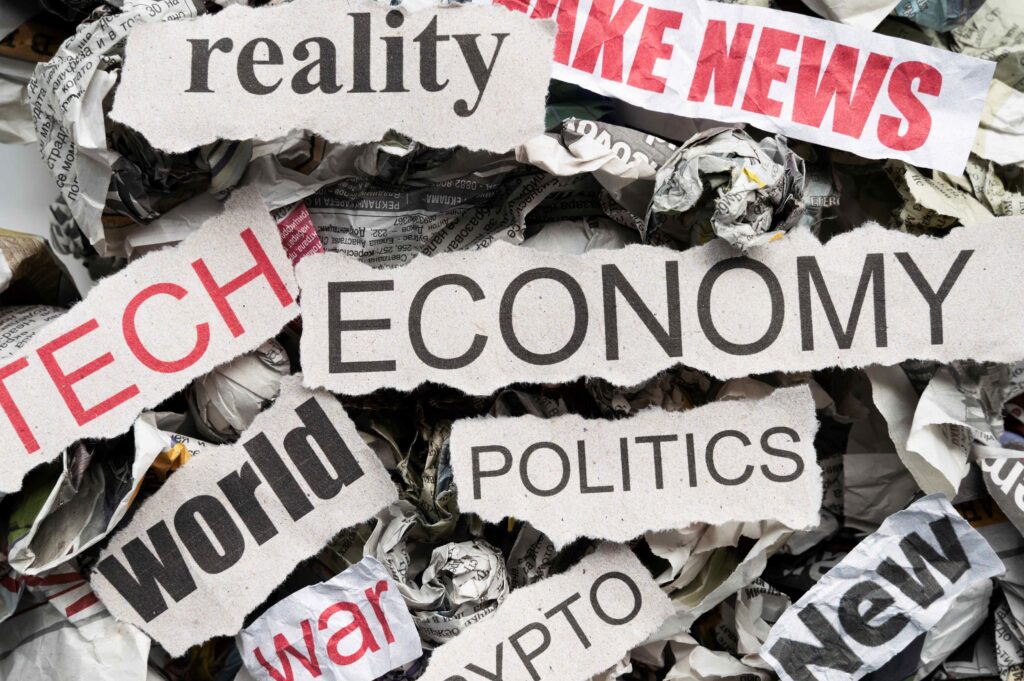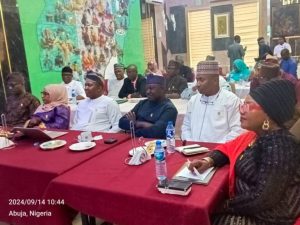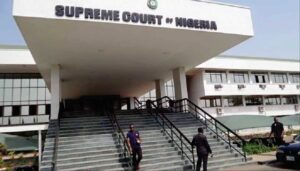The digital age has ushered in an era of unparalleled access to information. Yet, it has also created new challenges, with one of the most alarming being the rise of deepfakes. These are hyper-realistic fabricated videos, audio, or images generated using artificial intelligence (AI) that can make people appear to say or do things they never actually did. As deepfake technology evolves and becomes more accessible, the need for robust media literacy becomes paramount, especially in countries like Nigeria and the African continent, where both traditional and social media play influential roles in shaping political discourse, public opinion, and social cohesion.
Understanding Deepfakes: A Growing Threat
The term “deepfake” is derived from “deep learning,” the AI technique used to create these realistic forgeries. Originally emerging as a novelty in entertainment and social media, deepfakes have since evolved into a sophisticated tool of deception. From falsified political speeches to manipulated images of celebrities, the implications of this technology are vast, touching on politics, business, and personal reputations.
In Nigeria, with its vibrant democratic space and fast-paced digital media growth, the deepfake threat looms large. As we have seen in the past, the country has struggled with misinformation and disinformation during electoral seasons, with political actors leveraging fake news and doctored media to influence voters. The introduction of deepfakes takes this threat to an unprecedented level. Imagine a scenario where a fake video of a leading candidate making inflammatory remarks or conceding defeat surfaces days before an election — the potential for violence, panic, and disruption is immense.
Similarly, across Africa, where countries like Kenya, Ghana, and South Africa are experiencing a surge in online engagement, deepfakes present an existential challenge to the integrity of media and public trust. For countries grappling with existing social tensions, deepfake content could easily ignite division and unrest, destabilizing communities and undermining fragile democracies.
The Nigerian and African Context: Why It’s Especially Dangerous
Africa’s digital transformation, particularly Nigeria’s, has been nothing short of extraordinary. The spread of smartphones and increased access to the internet have revolutionized the way people consume news. However, this rise in digital consumption has occurred in parallel with a worrying deficit in media literacy.
In Nigeria, radio remains the primary source of news for many, especially in rural areas. But social media platforms like WhatsApp, Facebook, and Twitter have taken over urban centres, with their unregulated nature becoming fertile ground for disinformation campaigns. Unfortunately, many users lack the critical skills needed to differentiate between legitimate news and manipulated content. This vulnerability is what makes deepfakes particularly insidious.
Furthermore, the political landscape in Nigeria is highly charged. Politicians and their supporters often resort to propaganda, and false narratives spread rapidly in such a polarising environment. Deepfakes could be weaponised to create scandal, discredit opponents, or incite violence, making them a tool for undermining democracy and governance.
The stakes are just as high across Africa. In Ethiopia, for instance, ethnic conflict has been fueled by false social media posts, and the spread of deepfakes could worsen these dynamics. In South Africa, where xenophobic tensions flare up periodically, deepfakes could be used to fan the flames by depicting foreign nationals or political figures engaging in hostile behaviour. The technology threatens to erode trust in not just the media, but also in democratic institutions and leaders.
What Is the Solution?

Media Literacy: The First Line of Defence
Given the potential damage deepfakes can cause, the first step in countering them is through media literacy. Media literacy refers to the ability to critically assess and analyse media messages, understand the intent behind them, and recognise manipulative content.
In a world where trust in information is fragile, equipping citizens with the tools to question, verify, and critically evaluate the content they consume is more important than ever.
Why Media Literacy is the Key to Countering Deepfakes
The preceding scenarios demonstrate the real and significant damage that misinformation and media manipulation can cause across Africa. As deepfake technology becomes more accessible, the threat will only intensify, making it essential for citizens to develop critical thinking skills.
How Can Media Literacy Make a Difference?
- Critical Analysis of Sources: Media literacy equips people with the skills to scrutinize the authenticity of the content they consume. Teaching individuals to verify the source, cross-check facts, and consult multiple channels can mitigate the spread of deepfakes.
- Detection of Media Manipulation: Educating people about how deepfakes and other forms of media manipulation are created can help them identify tell-tale signs of digital tampering. This can help slow down the viral spread of such content.
- Trust in Reliable Information: Media literacy builds trust in credible news outlets, official channels, and fact-checking organisations, discouraging reliance on dubious social media sources where misinformation is most rampant.
- Countering Electoral Misinformation: In elections, deepfakes can easily be used to manipulate public opinion and discredit candidates. Media literacy campaigns that target voters and journalists can help ensure that manipulated media doesn’t disrupt the democratic process.
Solutions Beyond Media Literacy
While media literacy is a crucial first step, it must be paired with other solutions to effectively fight deepfakes. This includes legal frameworks that hold those who produce malicious deepfakes accountable. Governments must update laws to include AI-generated media manipulation as a form of cybercrime. Additionally, tech companies like Facebook, Twitter, and Google have a responsibility to deploy AI tools to detect and flag deepfakes before they go viral.
In Nigeria, institutions like the Nigerian Communications Commission (NCC) and the National Orientation Agency (NOA) could play pivotal roles in spearheading media literacy campaigns that focus on digital literacy, fact-checking, and civic education. Partnerships between governments, civil society, and the private sector will also be essential in building robust defence mechanisms against the spread of deepfakes.
To strengthen the case for the importance of media literacy in fighting deepfakes in Nigeria and across Africa, let’s explore several real-world examples and case studies that illustrate the impact of misinformation and manipulated content.
- Case Study: The 2019 Nigerian Presidential Elections
During Nigeria’s 2019 presidential elections, misinformation was rampant, primarily spread through social media platforms like WhatsApp, Facebook, and Twitter. Although deepfakes had not yet proliferated, doctored videos, manipulated images, and fake news articles contributed significantly to shaping voter opinion. One notable example was a viral video purporting to show the opposition candidate, Atiku Abubakar, conspiring with foreign powers to rig the election. This video was later proven to be false, but it had already contributed to widespread distrust.
In a country with deep political divisions, the weaponisation of such content could easily fuel chaos. As deepfake technology becomes more accessible, future elections could see even more sophisticated manipulation techniques used to discredit candidates or spread harmful propaganda. The example of the 2019 elections highlights the urgent need for media literacy programs that teach voters how to identify and counteract manipulated media.
- Case Study: False Videos During the End SARS Protests in Nigeria (2020)
During the 2020 #EndSARS protests in Nigeria, misinformation spread widely, particularly across social media platforms. Videos and images that appeared to show police or military brutality were shared, many of which were either taken out of context or altered to incite stronger reactions from the public. While deepfakes were not directly involved, these instances underscore how even slightly manipulated media can quickly spiral into national unrest.
In one specific case, a video circulated that allegedly showed soldiers shooting at protesters at the Lekki Toll Gate on October 20, 2020. While the event did involve the use of live ammunition by security forces, some videos that emerged in the aftermath were either doctored or edited to exaggerate the sequence of events. The public response to this misinformation resulted in widespread outrage and even international reactions, showcasing the high stakes of media manipulation in volatile situations.
- Case Study: Xenophobia in South Africa (2019)
South Africa has experienced several waves of xenophobic attacks in recent years, and misinformation has been a significant driver of these incidents. In 2019, a deepfake video of Nigerian nationals allegedly attacking South Africans circulated widely on WhatsApp and other social media platforms. This video was designed to stoke xenophobic tensions and contributed to a violent backlash against African immigrants, particularly Nigerians.
This case highlights the dangers of deepfakes in fragile socio-political environments, where existing tensions can be easily exacerbated by manipulated media. South Africa’s case demonstrates how deepfakes, or even simple misinformation, can be used to drive hatred and violence against marginalised communities. Media literacy campaigns could help citizens critically assess these viral videos before reacting.
- Case Study: Cameroon’s Deepfake Crisis (2019)
In 2019, a deepfake video allegedly showing Cameroon’s President, Paul Biya, delivering a controversial speech about the Anglophone crisis spread rapidly online. The video, although entirely fake, was believable enough to cause a significant public outcry. Many viewers were convinced that the president had taken an authoritarian stance on the ongoing crisis, further deepening divisions between the country’s Anglophone and Francophone communities.
This incident shows how deepfakes can be used to exploit and escalate already tense situations. In Cameroon’s context, the video exacerbated political instability and eroded trust in both the government and media outlets. This highlights the importance of educating the public on deepfakes and the necessity of scrutinising the authenticity of the political messages they consume.
- Case Study: Malian Conflict and Fake Videos (2020)
During the ongoing conflict in Mali, several fake videos and images surfaced on social media, falsely depicting atrocities committed by opposing factions. In one instance, a video circulated that appeared to show Malian soldiers executing civilians, fuelling anger and potentially stoking further violence. It was later discovered that the video was from another conflict entirely and had been manipulated to fit the Malian context.
This type of media manipulation not only undermines efforts for peace and reconciliation but also contributes to worsening the already fragile security situation in the country. If deepfake technology becomes more prevalent in such contexts, it could severely hamper peace-building efforts and fuel ongoing conflicts. Media literacy programs that target communities affected by conflict could help reduce the impact of such harmful misinformation.
- Case Study: Fake News and Misinformation During COVID-19 Pandemic in Africa
The COVID-19 pandemic saw a surge in the spread of misinformation across Africa, including Nigeria, where false claims about the virus, cures, and vaccines were rampant. Fake videos circulated on WhatsApp, showing “government officials” making inaccurate statements or recommending unproven treatments. These videos were highly shared and contributed to vaccine hesitancy in many communities.
In one notable case, a deepfake video circulated on Facebook, showing a supposed health official promoting a dangerous and unapproved cure for COVID-19. This deepfake, along with many other misinformation pieces, confused and undermined public health efforts to curb the spread of the virus.
The spread of this misinformation highlights the importance of media literacy in public health crises. Empowering citizens with the skills to identify and debunk fake health information can help prevent panic, reduce harm, and foster trust in legitimate sources.
A Call to Action
Africa is at a critical juncture in its digital evolution. As the continent embraces more advanced technology, the risks associated with deepfakes and misinformation grow. The case studies above from Nigeria, South Africa, Cameroon, and Mali provide a glimpse into the destructive potential of deepfakes in already fragile political and social environments.
Governments, civil society organizations, media houses, and tech companies must collaborate to implement media literacy programs that equip citizens with the tools to critically assess the content they encounter. While legal frameworks and AI-driven detection tools are necessary, they are not enough. A media-literate public is Africa’s best defence against the impending deepfake crisis.
Without immediate action, deepfakes could undermine trust in media, destabilize governments, and fuel social unrest. With the right media literacy initiatives, however, Africa can turn the tide against digital deception and protect its hard-earned democratic and social progress.
Conclusion: A Critical Moment for Nigeria and Africa
Deepfakes represent a new frontier in the ongoing battle against disinformation, and Africa is at a crossroads. Without a proactive approach, these digital forgeries could lead to chaos, disrupt democratic processes, and undermine trust in institutions. For Nigeria, where media consumption is expanding at breakneck speed, media literacy is the best form of defence against this rising threat.
As we continue to navigate the complexities of the digital age, we must make media literacy a priority in our schools, communities, and public discourse. Only by arming citizens with the knowledge to identify and resist manipulation can we hope to preserve the integrity of our media and safeguard the future of our democracies.
Africa cannot afford to be left behind in the fight against deepfakes — it’s time to prioritise media literacy for a safer, more informed future.








